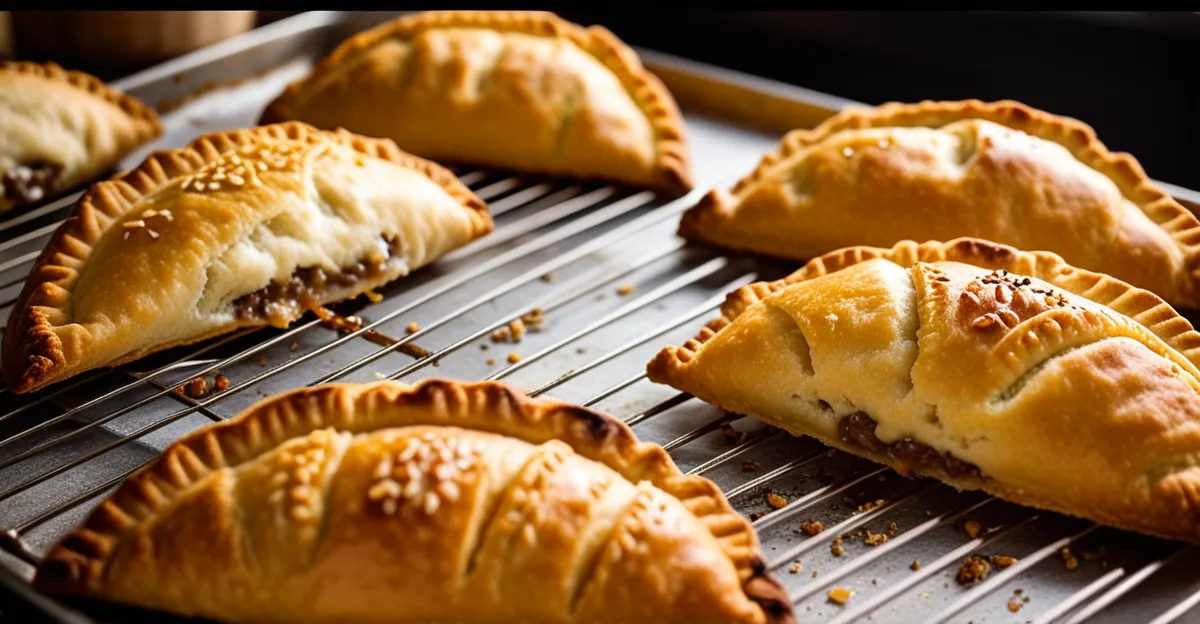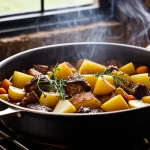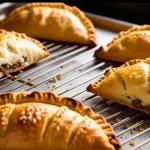Essential Steps to Making a Traditional Cornish Pasty
Crafting an authentic Cornish pasty starts with understanding its rich history and cultural significance. Originally a staple for Cornwall’s miners, this savoury pastry offered a reliable, hearty meal. The traditional Cornish pasty is grounded in a simple yet precise ingredient list: beef, potatoes, swede (rutabaga), onions, and a robust pastry dough. These ingredients create the balanced texture and flavours that define the dish.
When tackling a Cornish pasty recipe, it’s crucial to follow a step-by-step guide that respects the original methods. Authentic techniques ensure the filling cooks evenly inside a sturdy but flaky crust, maintaining the pasty’s distinctive shape and taste. For example, choosing the right cut of beef, usually skirt or chuck steak, combined with equal parts diced potato, swede, and onions, forms the classic filling.
Additional reading : What Are the Most Unusual Ingredients in Traditional UK Cooking?
Moreover, the preparation includes careful layering—not mixing—these ingredients directly. This approach preserves the pillowy texture of each component after baking. The pastry must be rolled to an exact thickness to hold the filling without becoming soggy or breaking. Therefore, mastering the how to make Cornish pasties process means appreciating both ingredient quality and traditional preparation techniques that have made this dish a true British culinary icon.
Preparing the Pastry Dough
Crafting the traditional Cornish pasty pastry is a crucial step in making authentic Cornish pasties. The dough’s texture directly affects the Cornish pasty recipe’s overall taste and structural integrity. Key ingredients include cold butter or lard, plain flour, a pinch of salt, and cold water. Using cold fats helps create layers, producing the characteristic flaky yet sturdy crust essential for holding the filling during baking.
Topic to read : What are the steps to prepare a hearty Lancashire hotpot?
The step-by-step guide for the dough begins with rubbing the fat into the flour until the mixture resembles fine breadcrumbs. This ensures the fat is evenly distributed, forming pockets that give the pastry its flakiness. Next, gradually add cold water, mixing lightly with a knife or fingertips until a dough forms. Overkneading must be avoided as it develops gluten, making the pastry tough rather than tender.
For the ideal Cornish pasty pastry, chill the dough for at least 30 minutes wrapped in cling film. This rest period relaxes the gluten, making it easier to roll out and less likely to shrink during baking. When rolling, aim for an even thickness about 3-5mm. Achieving the right texture in the homemade pastry is fundamental to mastering how to make Cornish pasties that are both delicious and authentic.
Creating the Classic Pasty Filling
Creating the Cornish pasty filling hinges on selecting the right cuts and proportions to maintain authenticity. The traditional Cornish pasty filling consists of diced skirt or chuck beef, combined equally with potatoes, swede, and onions. Precise dicing—typically about 1cm cubes—ensures that each ingredient cooks evenly within the pastry. This balance of beef and vegetable filling preserves the textural contrast essential to a traditional Cornish pasty.
When assembling the filling, it is crucial to layer the vegetables and meat without mixing them together. This method prevents the ingredients from turning mushy and keeps distinct flavours intact. A Cornish pasty recipe demands seasoning simply with salt and pepper, allowing the natural flavours to shine through.
Understanding how to make Cornish pasties with the perfect filling means recognizing the importance of ingredient quality and proportion. The meat provides robust flavour and tenderness, while the potato and swede offer a subtle, earthy sweetness that complements the beef. This filling mixture, when combined with authentic techniques, results in the balanced taste Cornish pasties are celebrated for across the UK and beyond.
Assembly and Crimping Techniques
Proper assembling Cornish pasty methods are vital to achieve the classic shape and seal that define an authentic Cornish pasty. Begin by rolling the Cornish pasty pastry into circles approximately 23-25 cm in diameter. This size ensures enough room to hold a balanced amount of the filling without overstuffing, which can cause leakage during baking.
When adding the filling, place it near one half of the pastry circle, layering the diced ingredients without mixing to keep textures distinct. Avoid overfilling; a compact mound allows the pastry to fold cleanly. After folding the pastry over the filling, form a semi-circle and gently press the edges together to remove air pockets.
The traditional Cornish pasty crimping method involves pinching and folding the pastry edge inwards toward the filling to create a thick, twisted seal along the curved side. This crimp not only secures the contents but also acts as a handle, echoing the miner’s original design. Practicing this technique helps prevent splitting and ensures even cooking.
Mastering these steps guarantees your pasty retains the integrity essential for an authentic Cornish pasty. Careful shaping and crimping form the foundation for the flaky crust and hearty filling combination central to how to make Cornish pasties perfectly every time.
Baking and Finishing Touches
Precise baking techniques are essential to perfect the traditional Cornish pasty. Start by preheating your oven to around 200°C (390°F). This temperature ensures the pastry bakes evenly, creating a crisp, golden crust without burning the filling. Consistency in oven heat is key; fluctuating temperatures can cause the pasty to become soggy or dry.
Applying an egg wash—a mixture of beaten egg and water—before baking enhances the Cornish pasty recipe by giving the crust an appealing shine and golden hue. Brush the egg wash gently over the pastry surface, avoiding the crimped edges to prevent sealing from weakening.
Baking times usually range between 45 to 55 minutes. Knowing how to make Cornish pasties involves checking for a fully cooked filling and a firm, browned crust. Test doneness by gently tapping the pastry; a hollow sound indicates crispness. Avoid cutting the pasty immediately after baking to preserve moisture inside; allow it to rest for 5-10 minutes.
Following these finishing steps ensures an authentic Cornish pasty with a crunchy exterior and tender interior, key to achieving the classic texture and flavour prized in traditional recipes.
Tips, Variations, and Common Questions
Navigating Cornish pasty tips can elevate your baking experience, especially when facing common challenges. For instance, if your pastry is tough, it likely means the dough was overworked; resting it longer or handling it gently helps maintain tenderness. When crimping pasties, ensure you press firmly but avoid tearing the dough, as this seal is vital both for appearance and for keeping the filling intact during baking.
Many wonder about substitutions in a traditional Cornish pasty recipe. While the classic filling is beef with vegetables, alternatives like lamb or chicken can work, though they shift away from the authentic taste. For dietary needs, gluten-free pastry options exist, but require specific flours and careful handling to mimic the flaky texture of the original pastry dough.
Common questions on how to make Cornish pasties often include baking times and freezing. After baking, allow pasties to cool completely before freezing to preserve freshness. Reheat in an oven to regain crispness rather than microwaving.
Lastly, serving suggestions enhance enjoyment. Traditional pasties pair well with simple mustard or a side salad, perfect for a hearty lunch or picnic. These practical tips round out your understanding and help maintain the authenticity and enjoyment of the traditional Cornish pasty.











